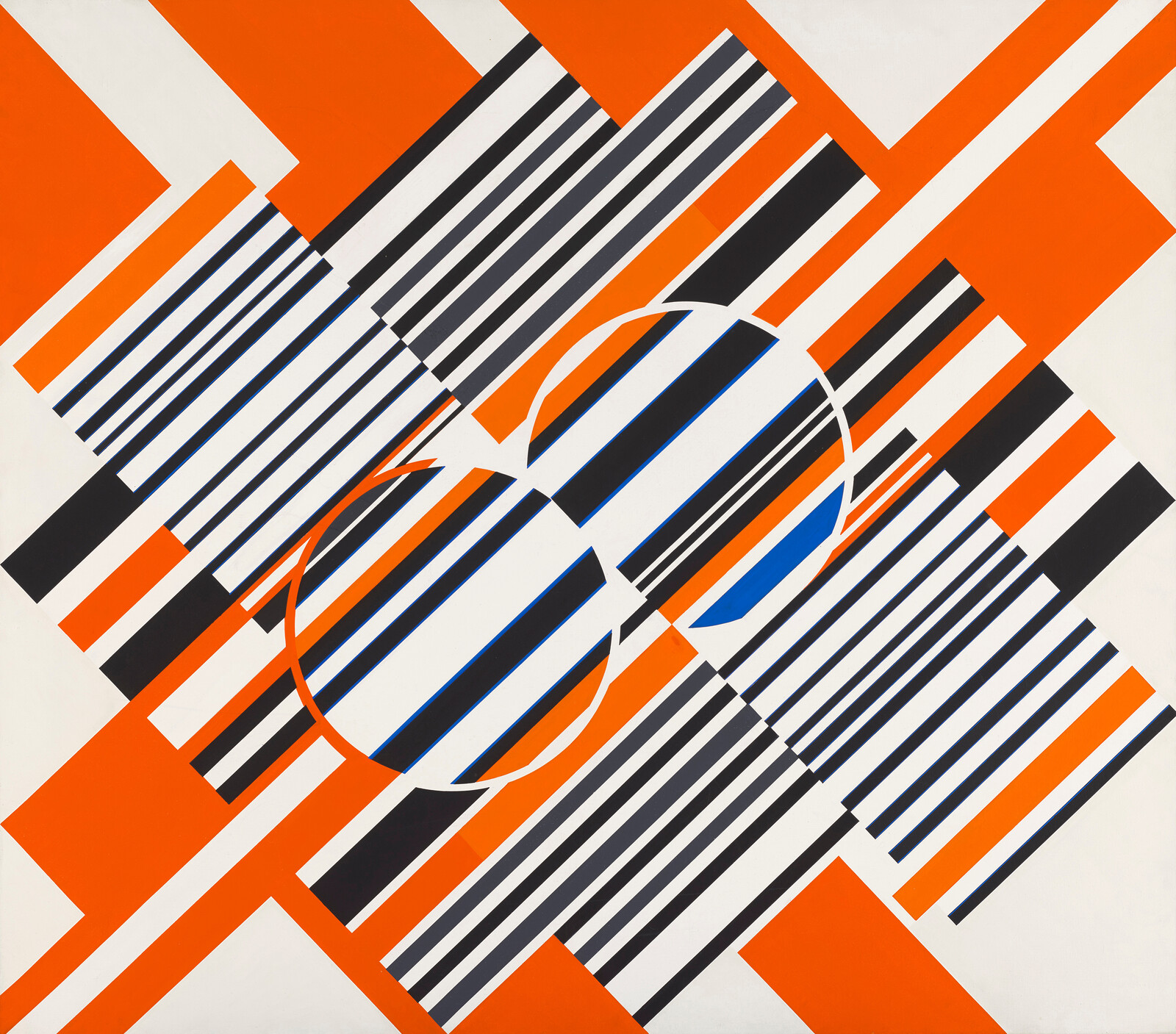The Paris Years (1954–1967)
November 21, 2023–April 7, 2024
Luisenstraße 33
80333 Munich
Germany
Hours: Tuesday–Sunday 10am–6pm,
Thursday 10am–8pm
T +49 89 23396933
F +49 89 23332003
lenbachhaus@muenchen.de
In 1981, the newsweekly “Stern” ran a satirical drawing that has since become famous: West German Chancellor Helmut Schmidt, in the midst of the East-West conflict, sits, between vodka and Coca-Cola, on a sofa in his bungalow—on the wall above him a painting by Günter Fruhtrunk. A year before his death, Fruhtrunk, a professor at the Munich Academy, was widely hailed as one of the Federal Republic’s leading exponents of concrete art. His design for the Aldi-Nord shopping bag in its aloof distinctiveness deservedly became iconic first in West, then in reunified Germany.
But Fruhtrunk’s career had begun decades earlier, in France: in the early 1950s, the young artist, living in the French occupation zone in southwest Germany, did everything in his power to get to Paris, home to the most innovative champions of a painting liberated from the task of representation. There he hoped to develop his own style. In 1954, he finally moved to the French capital, where he lived until his appointment to the teaching position in Munich in 1967, and he maintained a home in France even afterwards. Working with exceptional precision and patience, he painted pictures that were meant to be free of the artist’s personal or interpretational aspirations, that wanted to be pure “articulated chromatic texture of the greatest luminosity.” His objective was nothing less than the “freedom of seeing.”
He was supported by influential veterans of the prewar avant-garde and represented by Galerie Denise René, which gathered the most uncompromising exponents of a constructive abstraction. Fruhtrunk was tireless in his efforts to enlarge his transnational network of artists, critics, philosophers, gallerists. His first solo exhibitions were held in Paris, Milan, Marseille, and it was from France that he built a German audience for his work.
Our exhibition zooms in on this prolific period in Fruhtrunk’s life and oeuvre and sets it in the context of the Franco-German art relations in the 1950s and 1960s. Around forty works with which he presented himself to the public at the time convey a vivid sense of the contemporary beholders’ experience.
Concurrently, the Kunstmuseum Bonn will present a Günter Fruhtrunk retrospective that will travel to the Museum Wiesbaden.
With generous support of Förderverein Lenbachhaus e.V.


